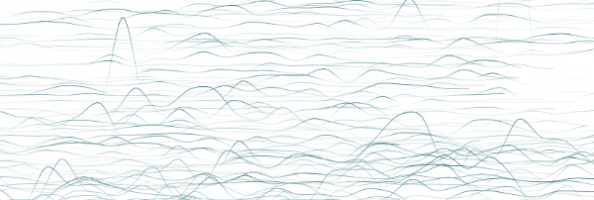
Big Data Wave
The Big Data Wave visualization shows the continous development of technologies that are related to the term Big Data. Retrieving the commit history regarding changes, maintaining bug fixes, or new features was necessary to show the progress of each technology. All commits by contributors were displayed over time.
February 14, 2017 | Comments (0) | Category: Visualization

Big Data Technology Circle
The awesome community provides a curation of big data technologies. Comparing Big Data technologies in a radial view provides a consistent overall perspective about all collected technologies. Technologies like Spark, Hbase, or Hive are open source and use Git as their central repository to develop and maintain features.
February 13, 2017 | Comments (2) | Category: Visualization
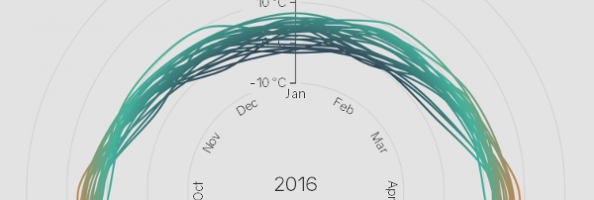
25 Seasons in Dresden
“This was the coldest winter since 1970.” This statement is common headline of weather reports on TV news. The temperature are sometimes varying during the seasons in cities. But how can we visualize this phenomenon? The weather visualization represents the last 25 seasons in Dresden. A radial line representation was chosen to recognize repeating patterns of temperature similarities and differences within each month of the year.
January 12, 2016 | Comments (2) | Category: Visualization
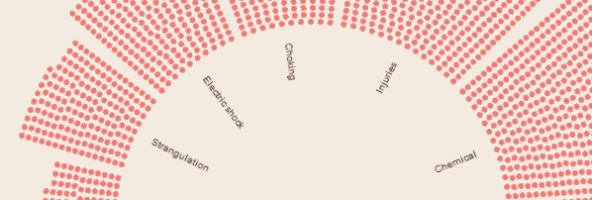
European Product Alerts
When a product (e.g. a toy, a childcare article or a household appliance) is posing a serious risk to the health and safety of civilians it will be collected in a central rapid alert system (RAPEX) by the European Commission. Notified products may need to be withdrawn from the market, recalled from consumers or warnings are needed to prevent risks and accidents. The visualization was not developed with CPU-centric visualization frameworks (e.g. D3.js). Instead a WebGL framework was used to support the GPU acceleration and to represent a much higher number of visual elements. The prototypical development supports data streaming to avoid delays through the static load of big files, too. Because of the technology mix the atomic visualizations provides the best fit to achieve an overview without losing any detail.
June 07, 2015 | Comments (0) | Category: Visualization
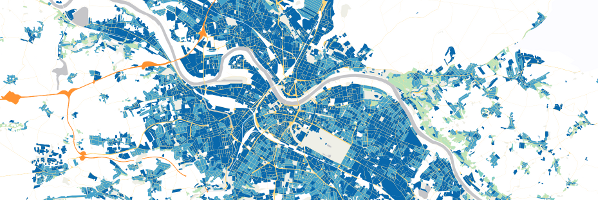
Coloring Urbanization
Smart cities are providing a rich access to infrastructure services like free internet access, charging stations for electric cars, or open data initiatives. But the progress of smart infrastructures depends on the urbanization of cities. It is common that smart services emerge in regions with a high density of urbanization. But on the other side, [...]
December 16, 2014 | Comments (1) | Category: Visualization
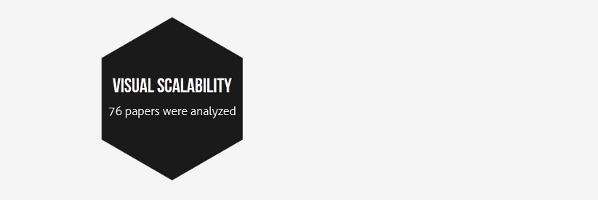
The Visual Scalability Hexagon
We can see newly created data visualizations nearly every day around the world wide web. Starting from creating charts in spreadsheet applications to the creation of highly individual data visualizations including new perspectives has changed our way to see and interact with data. Because of this development, i had a question that has to be answered during the last months: Why is the number of visual elements increasing?
August 27, 2014 | Comments (0) | Category: Visualization

Social Indicator Chart presented at the DWM Workshop Namur
The usage of design principles is the basis for the development of insightful data visualizations. In particular, the scalability of visualization was the topic at the DWM Workshop in Namur, Belgium. Design principles are not only useful for data visualization but also commonly used in advertising, illustrating complex content, and product design. The basic idea is always the same to shape an idea for clear communication. If you use design principles in your data visualization, you can figure out patterns, outliers, and eliminating noise of data.
March 12, 2014 | Comments (1) | Category: Visualization

Atomic Visualization of Serious Risk Products
When a product (e.g. a toy, a childcare article or a household appliance) is posing a serious risk to the health and safety of civilians it will be collected in a central rapid alert system (RAPEX) by the European Commission. The data visualization represents all collected products in 2013 and by clicking on one of the following tabs the products are displayed and structured based on a chosen attribute (e.g. country of origin or product category).
January 09, 2014 | Comments (0) | Category: Visualization

Legionella Outbreak in Germany
The legionella outbreak in Germany reminds on the historical John Snow map about the cholera outbreak in London. An increasing detailing of data beginning from an overview of Germany, federal states, counties until the private residents can help to discover the distribution and investigation of legionella occurrences and potential sources. Discovering the sources is the most challenging part in both cases. In the case of John Snow it was a public water pump on the Broad Street while in the second case it was an evaporation factory in the industry sector of Soest.
December 16, 2013 | Comments (3) | Category: Visualization

The Right to Forget
Google is collecting every removal request recieved from government agencies and courts around the world. The increasing number of removal requests is leaving a black hole in the world wide web. The developed bubble chart represents the collected removal requests by the Google Transparency Report. The analogy was a black hole to point out the increasing censorship in the world wide web but also to emphasize the need to remove content especially for defamation in the same way.


